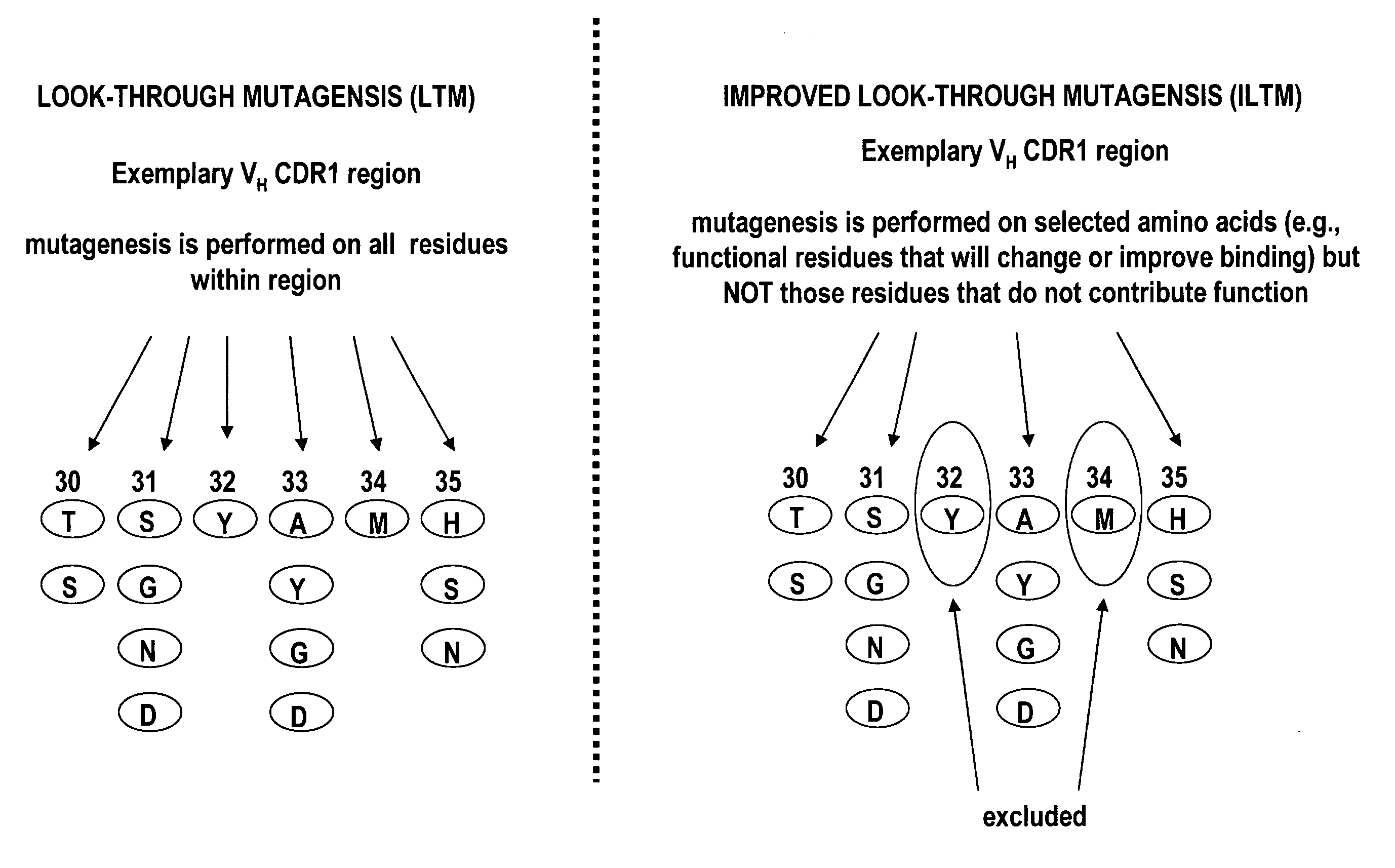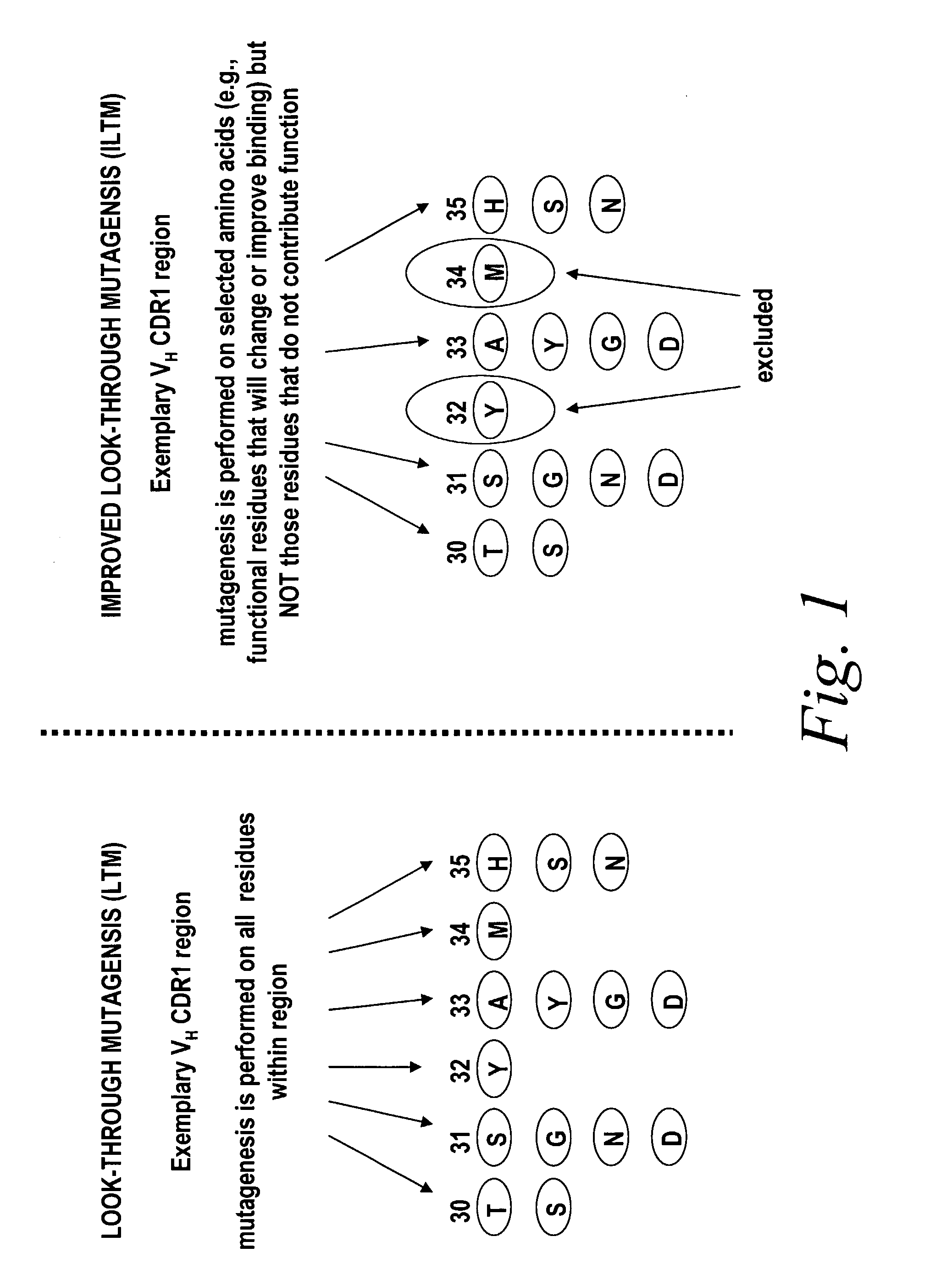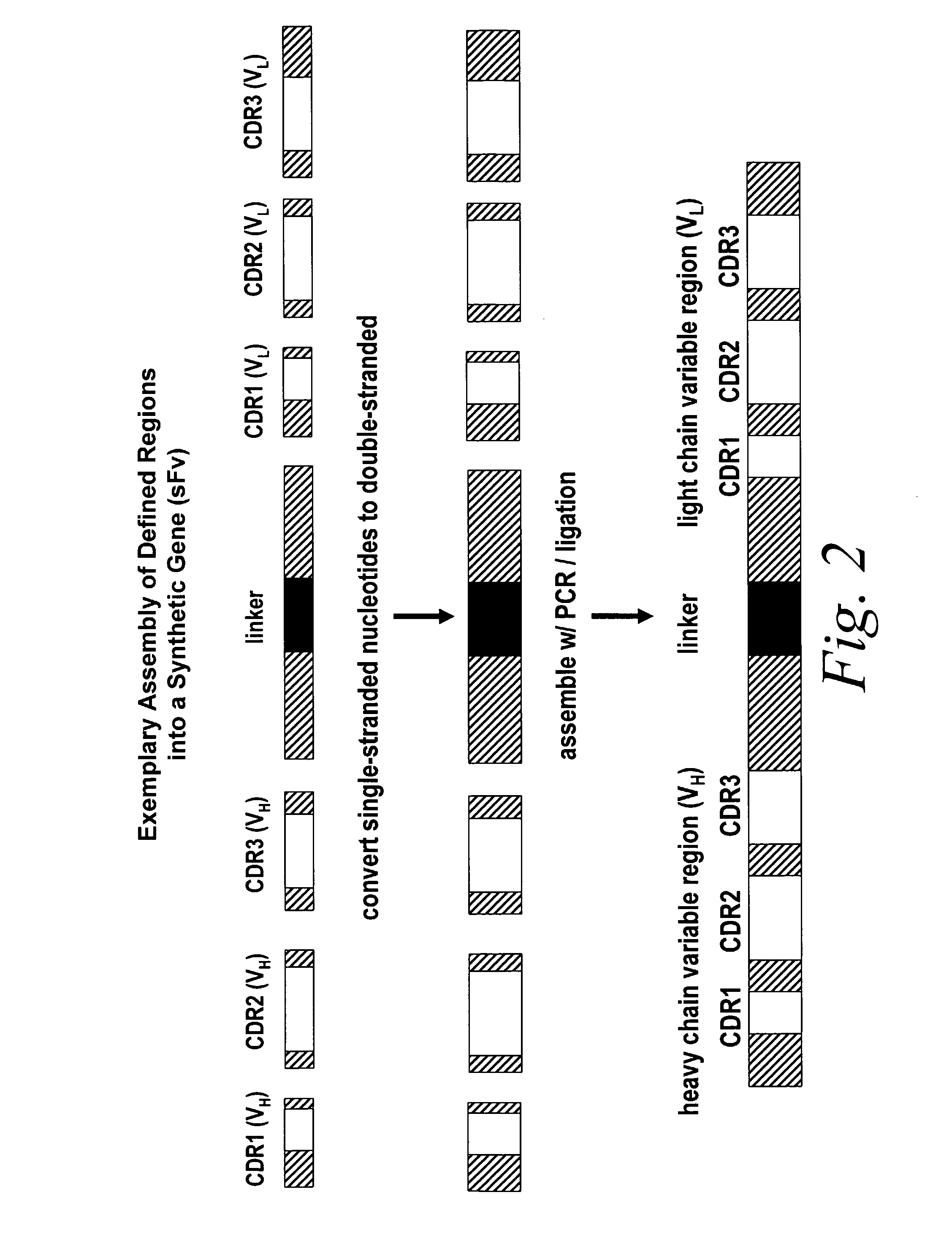Look-through mutagenesis for developing altered polypeptides with enhanced properties
a technology of enhanced properties and mutagenesis, which is applied in the field of look-through mutagenesis for developing altered polypeptides with enhanced properties, can solve the problems of preventing the capacity to meaningfully select a desired candidate, limiting the number of residues, and limiting the selection of mutants. , to achieve the effect of reducing the number of residues, and efficient screening
- Summary
- Abstract
- Description
- Claims
- Application Information
AI Technical Summary
Benefits of technology
Problems solved by technology
Method used
Image
Examples
example 1
Improved Look-Through Mutagenesis for the Development of High Affinity Antibodies
[0111]In this example, the improved look-through mutagenesis of an exemplary scFv antibody, is described.
[0112]Briefly, improved look-through mutagenesis (LTM) was used to identify VH and VL CDR mutations in the VH and VL CDR regions of an antibody that enhance binding affinity to a chosen antigen, i.e., to identify the functional amino acid residues (positions) or hot spots that impart binding activity. The purpose of improved look-through mutagenesis (LTM2) is to introduce a selected substitution at targeted positions in a region of a polypeptide, e.g., the CDR regions of the variable antibody chain. Initially, coding libraries for both the VH and VL chains were constructed. Amino acid sequences of the reference anti-ovalbumin antibody VL and VH chains were identified (see SEQ ID NOS: 3-4) and a library of starting sequences for CDR1, CDR2, and CDR3 regions of the anti-ovalbumin VH chain identified by...
example 2
High Throughput Library Screening for the Development of Antibodies with Enhanced Properties
[0122]In this example, the high throughput screening of exemplary single chain antibodies with enhanced properties, is described.
[0123]FIG. 9 depicts a generalized scheme for enriching the ovalbumin specific high affinity binding clones from the heterogeneous LTM2 scFv library. After induction in galactose media, the yeast cell library (107) was resuspended in PBS / BSA buffer (total volume of 500 μl). Biotinylated ovalbumin was added to the yeast suspension for a final concentration 50 nM and incubated at 25° C. for 2-3 hours with shaking. The yeast cells were pelleted, washed 3 times, and resuspended in 300 μl ice cold PBS / BSA buffer of buffer with 1×108 streptavidin coated magnetic beads added. The bead cell mixture was incubated on ice for 2 minutes with gentle mixing by inversion to form a binding complex consisting of yeast high-affinity scFv expressing cells, biotinylated ovalbumin, and ...
example 3
High Throughput Library Screening for the Development of Antibodies with Improved Koff Rates
[0128]In this example, the high throughput screening of exemplary single chain antibodies with enhanced Koff rates, is described.
[0129]Briefly, pre-sorted clones from the above example were grown overnight in glucose selection media and then plated on solid media to isolate single colonies. From single colonies, liquid cultures of clones were grown in glucose selection media at 30° C. with shaking for 48 hours before pelleting and re-suspending in galactose selection media for the appropriate OD time period. Because the FACS pre-sort enriches (by approximately 80%) but does not eliminate all undesirable clones, the EC50 of the isolated clones was characterized to eliminate those that display binding values inferior to anti-ovalbumin wild type reference antibody (as detailed above). Only those isolates with comparable or superior EC50 values were then selected for further Koff analysis.
[0130]A...
PUM
| Property | Measurement | Unit |
|---|---|---|
| pH | aaaaa | aaaaa |
| pH | aaaaa | aaaaa |
| volume | aaaaa | aaaaa |
Abstract
Description
Claims
Application Information
 Login to View More
Login to View More - R&D
- Intellectual Property
- Life Sciences
- Materials
- Tech Scout
- Unparalleled Data Quality
- Higher Quality Content
- 60% Fewer Hallucinations
Browse by: Latest US Patents, China's latest patents, Technical Efficacy Thesaurus, Application Domain, Technology Topic, Popular Technical Reports.
© 2025 PatSnap. All rights reserved.Legal|Privacy policy|Modern Slavery Act Transparency Statement|Sitemap|About US| Contact US: help@patsnap.com



